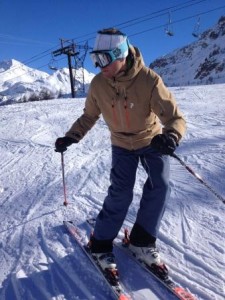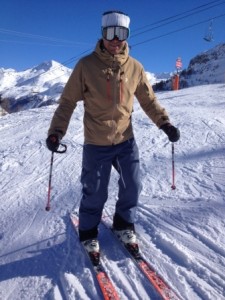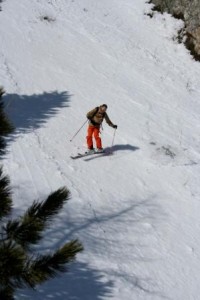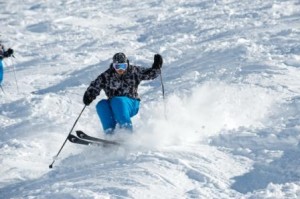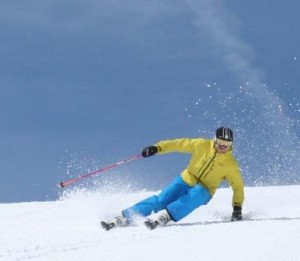After a bonkers couple of weeks of winter weather, the cold fluffy powder is restricted to the high north faces. But don’t fret. We have warm settled conditions now and my 2nd favourite type of snow – Spring Snow. It can be hard to find and get it good, so here is Coach Kieran explaining:
What is it?
When the sun thoroughly heats the snow pack from the surface down to the earth, the prevalent moisture spreads uniformly across it’s depth. Given the right temperatures, this freezes solid in the evening and over night. The next day the sun can heat up the top inch or so, creating a ‘corn’ feel, on a firm base. It’s great to ski and potentially quite safe.
Problems?
To early = smooth, slick, solid ice. Both dangerous and uncomfortable.
To late = slushy to the base of snow pack. Serious avalanche territory.
Too few cycles = bumpy, other skiers tracks, variable depths, variable thaw rates.
So what do you consider when finding Spring snow?
- Timing: at 09:00 most of the East faces (Belvarde, Borsat, Charvet, etc) have been in the sun for a few hours, and given time to absorb those rays and soften. South faces late morning and lunch time. West faces are best in the afternoon.
- Temperatures: The previous afternoon needs to be hot enough to melt out the other tracks and uneven nature of the slope. This will hopefully be +5 ish with direct sunlight. Overnight, the colder the better -5, brilliant. Especially with a deeper snow pack. As soon as the temperatures approach 0, or go above, combined with direct sunlight the snow will soften. It may be a short window of 1 hour to hit the slope at the right time.
- Cycles: The more melt freeze cycles, the more compact the snow will be, and the fewer skiers tracks from previous days. This makes the snow and slope as a whole more predictable, and safer as it’s glued together at the bottom.
- Aspects: The sun rises due East on the 21st March, and sets due West. After that date, it rises gradually more North East, but still takes a trajectory around the south of the sky. So North faces will remain mostly in the shade for the season. Southerly facing slopes at this time of year take a beating from the high sun. Take for instance the Fontaine Froid; probably the first slope to run out of snow at the end of April.
- Angles: A slope will absorb more sun if it directly faces it. A very flat slope will be softened less than a 40 degree slope. Especially early East faces, and late West faces.
- Slope base (anchors, rocks, grass, smooth slabs): This is a safety point more than anything. Rocks in the snow pack create pockets of air, and they heat up in the sun. A slope dotted with rocks is probably more unstable at this time of year than a big open white slope. A shrubby, or large scree based slope will have better anchors to hold the snow from avalanching than a smooth rock slope or fine grassy slope.
- Altitude: This will usually relate inversely with the temperature, unless there is a pressure/temperature inversion in which the valley is colder than the high mountains. Generally the higher you go, the longer it takes for the Spring snow to transform from hard icy snow.
- Wind: The same conditions as the day before mean very little if the wind is 5mph stronger. Slightly more wind can slow the transformation by more than an hour, and can stop it all together.
- Cirrus Cloud: That very hazy, high level cloud that slightly dims your shadow. This can have a massive effect by absorbing the suns rays and stopping the transformation.
There are countless other factors to consider, especially when managing a group in this kind of terrain, but these are the main contributors to good snow.
Always carry at least a Transceiver, Shovel and Probe with you. We hand these out for use during our Spring Clinics, where you will be guided to cool spots, educated in finding good safe snow, and improve your technique!
Be safe, and try to get out for some high altitude resort fun in Val d’Isere over the next few weeks… We have spaces on our group clinics. The snow is amazing, the lifts will be dead quiet, and the sun is out!

